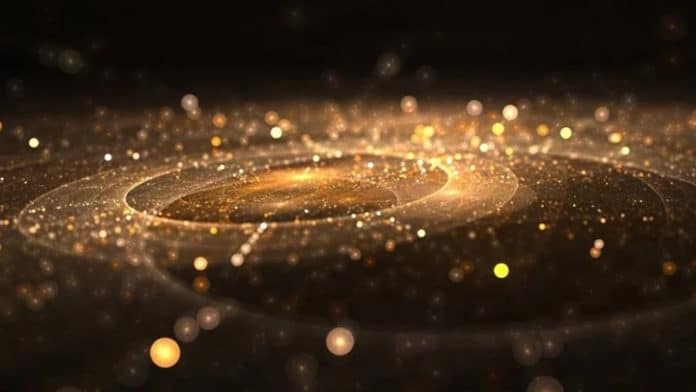In a first of its kind of study, scientists from the University of Hertfordshire explored the origins of all the elements in the periodic table.
To reach a deeper understanding of the origin of elements in the periodic table, scientists constructed Galactic chemical evolution (GCE) models for all stable elements using theoretical nucleosynthesis yields and event rates of all chemical enrichment sources.
Their study reveals unexplained quantities of gold in the cosmos, posing an astronomical mystery.
Collisions between neutron stars — can’t explain gold’s abundance either. So, where’s the gold coming from?
Past studies were right that neutron star collisions release a shower of gold. But those studies didn’t account for the rarity of those collisions. It’s hard to precisely estimate how often tiny neutron stars — themselves the ultra-dense remnants of ancient supernovas — slam together.
The research team found that the role of neutron star mergers may have been considerably overestimated. It appears that another stellar explosion altogether is responsible for making most of the gold in the cosmos.
Dr. Chiaki Kobayashi, University of Hertfordshire, explains, “Even the most optimistic estimates of neutron star collision frequency can’t account for the sheer abundance of gold and other elements in the Universe. This was a surprise. It looks like spinning supernovae with strong magnetic fields could be the real source of the majority of these elements.”
A nuclear physics experiment may solve the astrophysical problem of the missing gold.
Ian Roederer, an astrophysicist at the University of Michigan, who hunts traces of rare elements in distant stars, said, “This study has one big advantage: It’s extremely thorough.”
“The paper contains references to 341 other publications, which is about three times as many references as typical papers in The Astrophysical Journal these days.”
However, scientists were able to explain atoms’ formation as light as carbon-12 (six protons and six neutrons) and as heavy as uranium-238 (92 protons and 146 neutrons). That’s an impressive range, covering elements that are usually ignored in these types of studies.
Using the model, scientists were able to explain the presence of europium and strontium. That matches observations in space. But gold remains an enigma.
Journal Reference:
- Chiaki Kobayashi et al. The Origin of Elements from Carbon to Uranium. DOI: 10.3847/1538-4357/abae65
